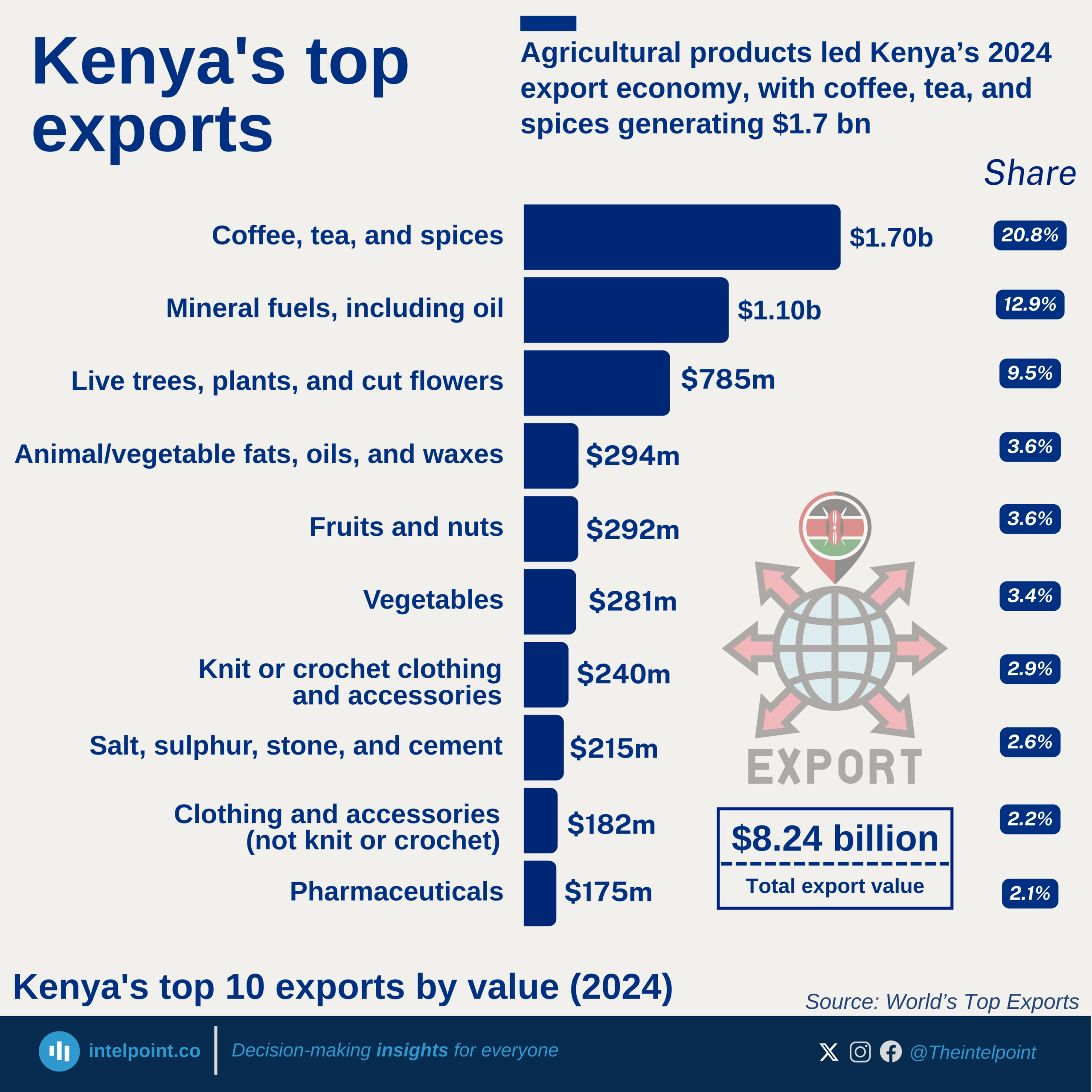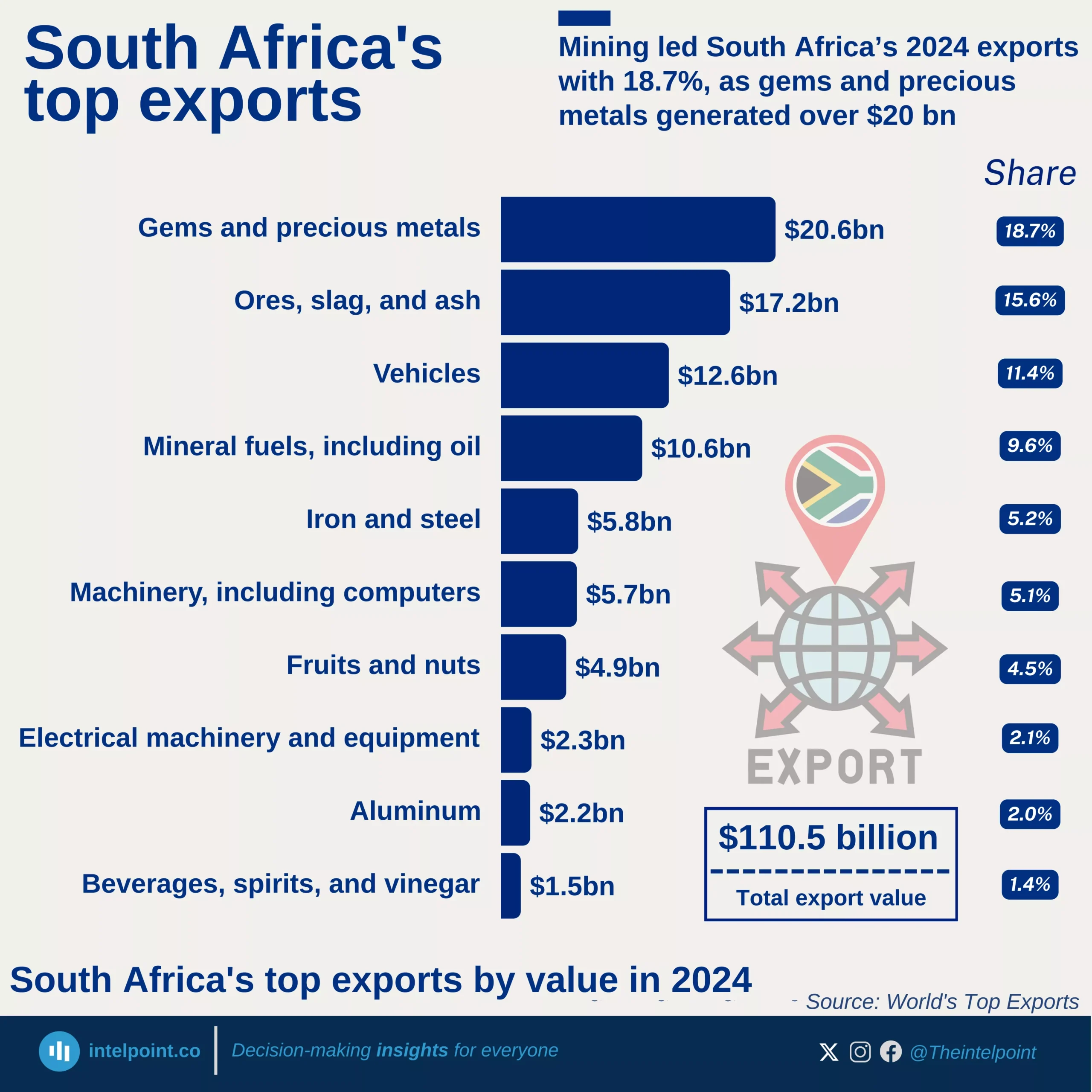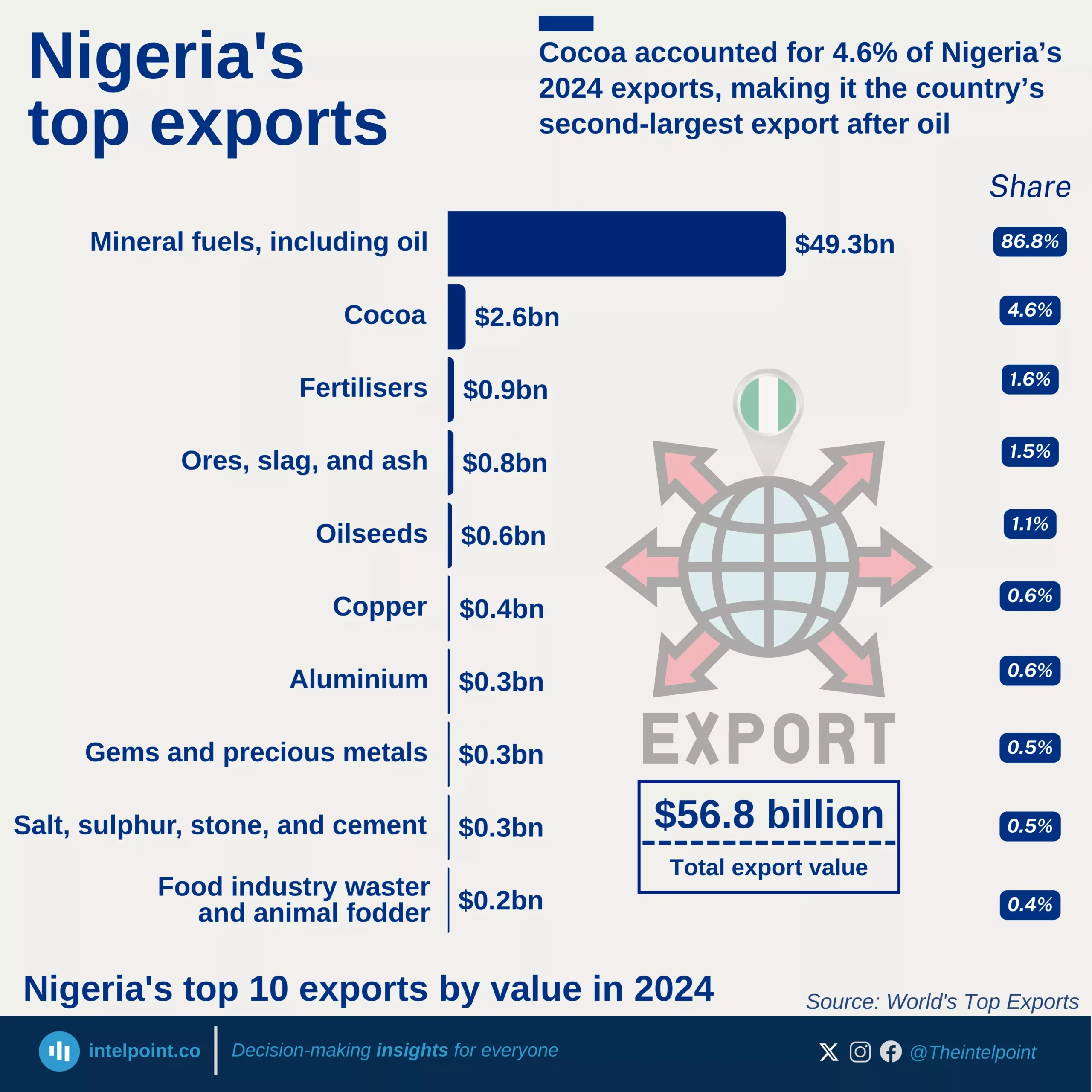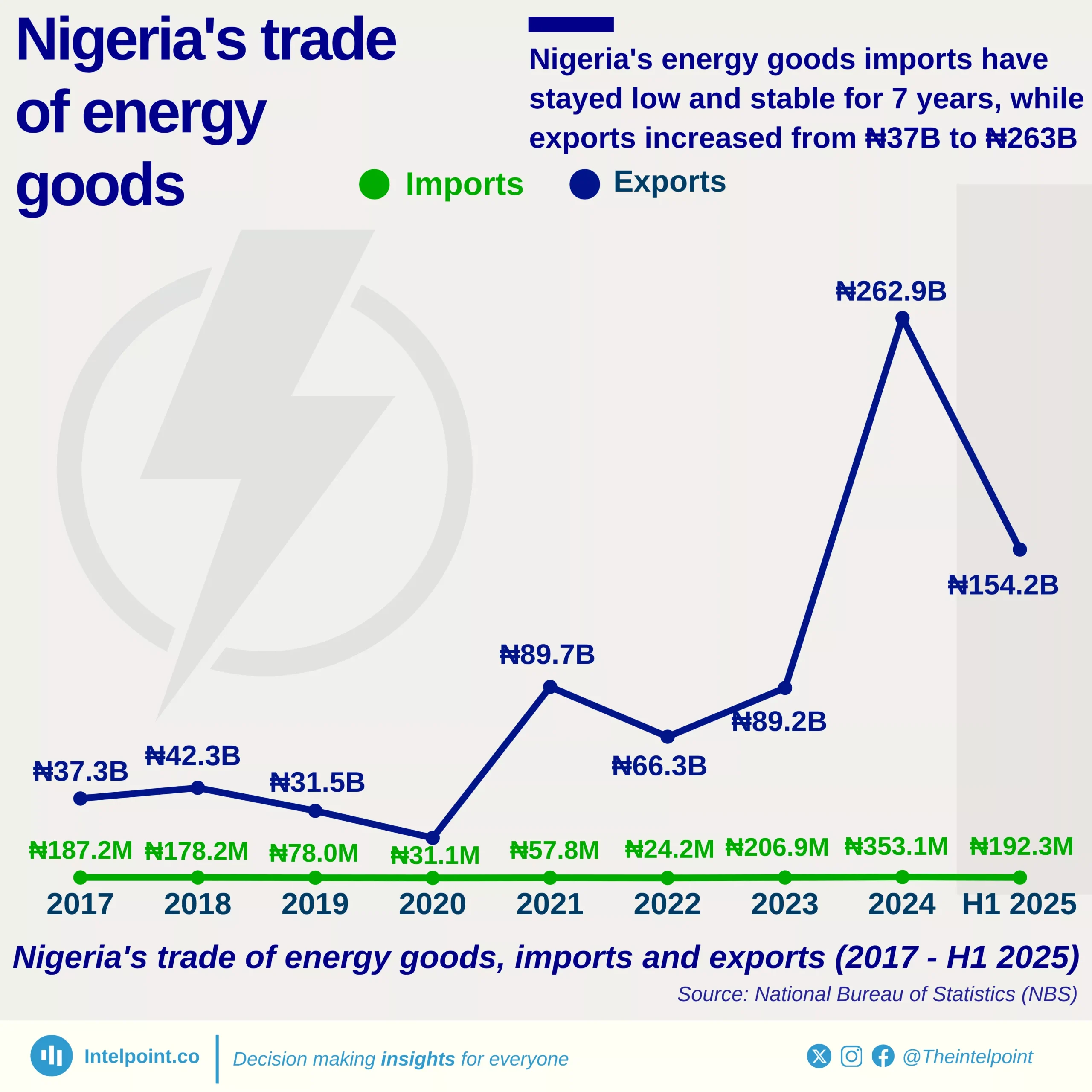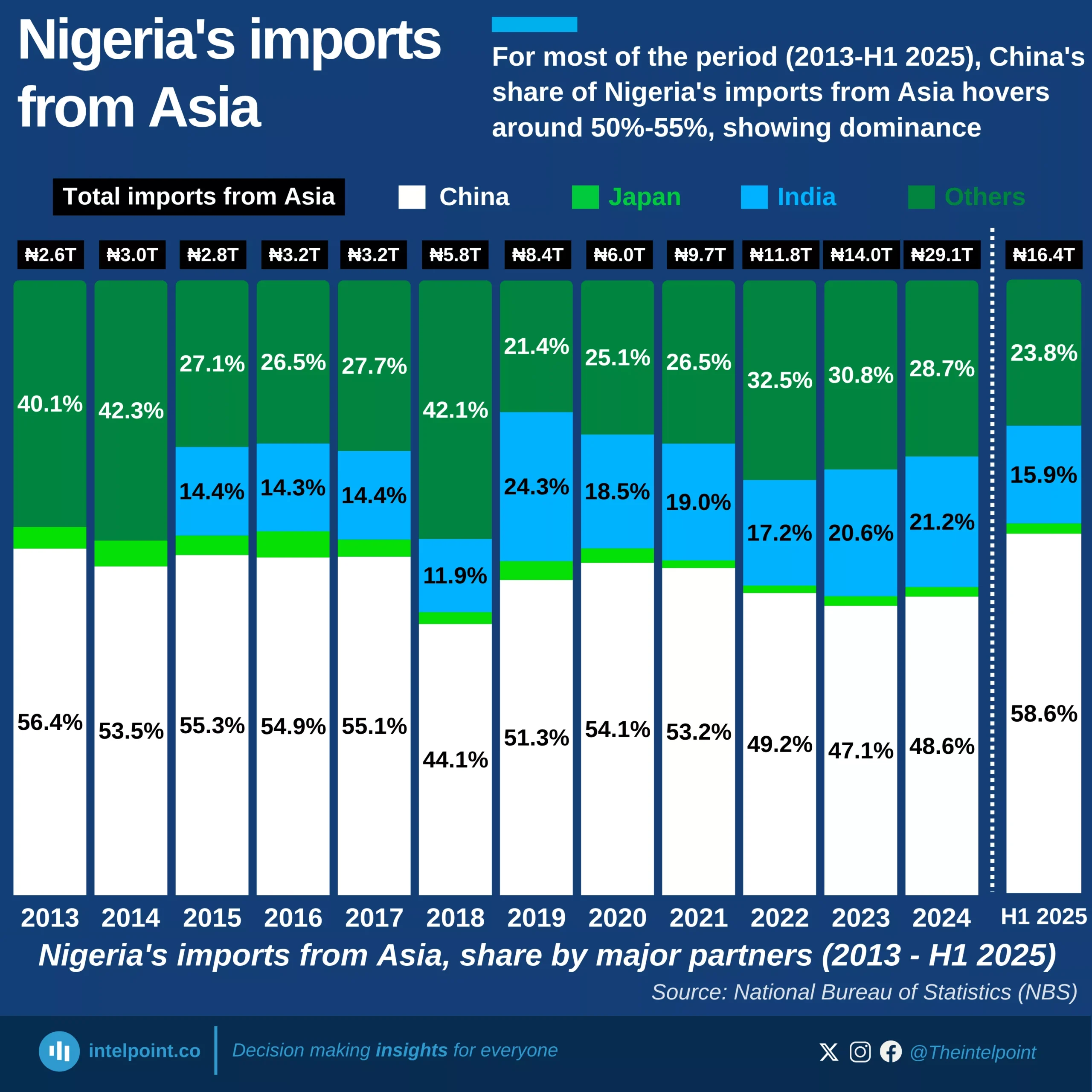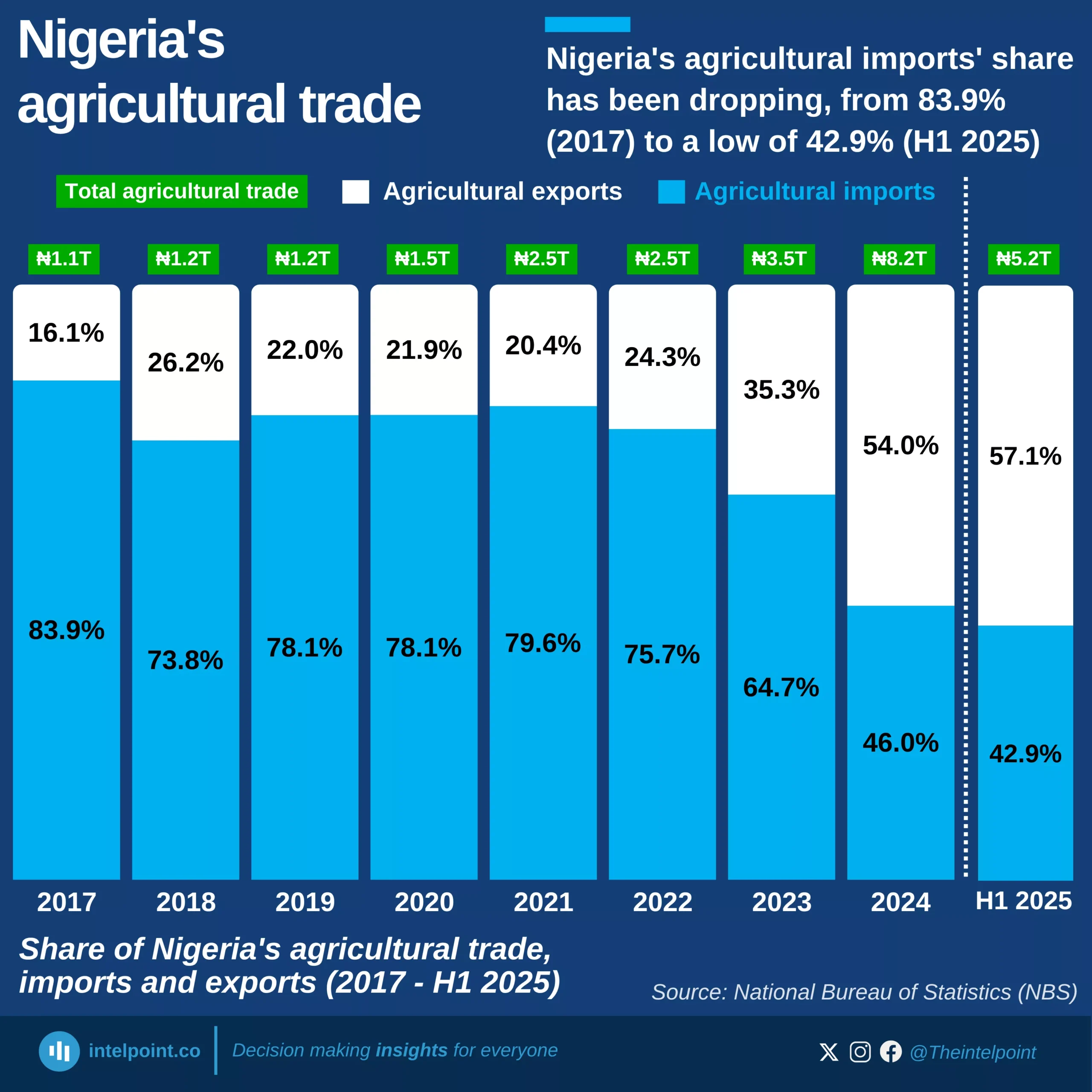The period from 2008 to 2015 saw Nigeria’s trade balance soar, with consistent surpluses indicative of a thriving export sector.
Years with trade deficits, like 2016, 2020, and 2021, suggest that Nigeria was spending more on foreign goods than it earned from exports. This could have led to a trade imbalance that negatively affected economic stability and growth.
By 2023, Nigeria’s trade balance was ₦44.8b, the lowest recorded in the period.
